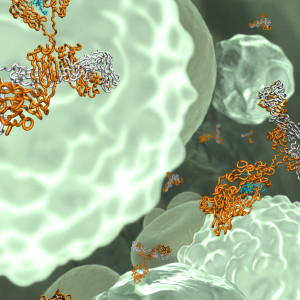 Bezlotoxumab (ZINPLAVA) was approved by the US Food and Drug Administration to reduce recurrence of Clostridium difficile infection (CDI) in adult patients (18 years of age or older) who are receiving antibacterial drug treatment of CDI and are at high risk for CDI recurrence. The product is a human IgG1 monoclonal antibody that targets C. difficile toxin B, and it is the first monoclonal antibody therapeutic to be approved for reduction of recurrence of a bacterial infection. Bezlotoxumab was developed by researchers at the University of Massachusetts Medical School’s MassBiologics Laboratory in conjunction with Medarex (now part of Bristol-Myers Squibb), and was licensed to Merck in 2009.
Bezlotoxumab (ZINPLAVA) was approved by the US Food and Drug Administration to reduce recurrence of Clostridium difficile infection (CDI) in adult patients (18 years of age or older) who are receiving antibacterial drug treatment of CDI and are at high risk for CDI recurrence. The product is a human IgG1 monoclonal antibody that targets C. difficile toxin B, and it is the first monoclonal antibody therapeutic to be approved for reduction of recurrence of a bacterial infection. Bezlotoxumab was developed by researchers at the University of Massachusetts Medical School’s MassBiologics Laboratory in conjunction with Medarex (now part of Bristol-Myers Squibb), and was licensed to Merck in 2009.
Bezlotoxumab is the 6th new antibody therapeutic to be granted a first approval in 2016. Of the applications for 8 new mAb therapeutics currently undergoing regulatory review in the US or EU (i.e., mAbs not previously approved for any indication in these regions), 3 have FDA action dates known to occur in late October-December 2016. The Antibody Society maintains a comprehensive table of approved antibody therapeutics and those in regulatory review in the US or EU. Please log in to access the table, located in the Members Only section.


